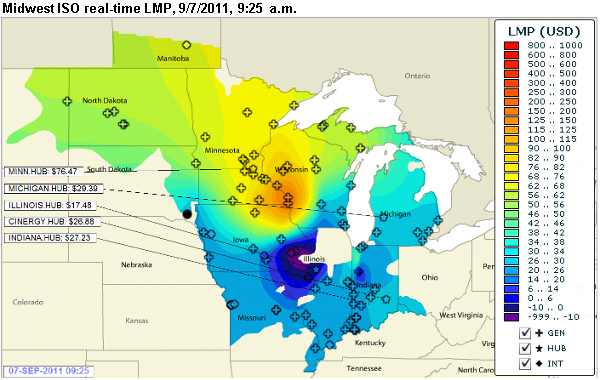Articles
Locational Marginal Price
- Locational Marginal Pricing Map Pjm
- Locational Marginal Pricing Tutorial
- Locational Marginal Price
- Caiso Locational Marginal Price
| NOTE: The original chart and associated discussion of the frequency of negative prices in RTOs originally published on June 18, 2012 has been removed because of incomplete data from an external source. |
Locational Marginal Price or “LMP” shall mean the market price for energy at a given location in a Party’s Control Area, calculated in accordance with the requirements of the Party’s tariff, and “Locational Marginal Pricing” shall mean the processes related to the determination of the LMP. Sample 1 Sample 2 Sample 3.
Under certain conditions, electric generators in regional transmission organizations (RTOs) actually pay to produce power as reflected in a price below zero. This situation can arise because some types of generators, such as those providing nuclear, hydroelectric, or wind energy, cannot or prefer not to reduce output for short periods of time when demand is insufficient to absorb their output.
- Locational Marginal Pricing (LMP), Price Formation and Competitive Electricity Markets. All centrally coordinated electricity markets in the U.S. Currently employ locational pricing to price electric energy. PJM implementation: April 1, 1998; New York ISO implementation: November 19, 1999; ISO New England implementation March 1, 2003.
- Appendix C Locational Marginal Price The CAISO shall calculate the price of Energy at Generation PNodes, Scheduling Points, and Aggregated Pricing Nodes, as provided in the CAISO Tariff. The CAISO establishes Trading Hub prices and LAPs as provided in the CAISO Tariff.
- Introduction to Locational Marginal Price(LMP) 전력산업에서 경쟁적인 환경을 가지고 있는 미국에서는 2002년 Federal Energy Regulatory Commission(FERC)의 제안에 따라 Independent System Operator(ISO)들이 Locational Marginal Price(LMP)를 적용하기 시작했다.
RTOs use locational marginal pricing (LMP). Prices are determined at thousands of locations. Prices are also determined hourly and on a 5-minute basis.

Technical and economic factors lead power plant operators to run generators even when power supply outstrips demand. For example:
Locational Marginal Pricing Map Pjm
- For technical and cost recovery reasons, nuclear plant operators try to continuously operate at full power.
- The operation of hydroelectric units reflects factors outside of power demand, for example, compliance with environmental regulations such as controlling water flow to maintain fish populations.
- Eligible renewable generators can take a 2.2 cents/kWh or $22/MWh production tax credit (PTC) on electricity sold. This means that some generators, primarily those operating wind turbines, may be willing to sell their output at negative prices to continue producing power.
- There are maintenance and fuel-cost penalties when operators shut down and start up large steam turbine (usually fossil-fueled) plants as demand varies over a day or a week. These costs may be avoided if the generator sells at a loss when demand is low.
In these situations, generators may seek to maintain output by offering to pay wholesale buyers to take their electricity. While generators will rarely be willing to pay to generate for a whole day to avoid shutting down, many are more willing to do so when they only have to pay for 5 minutes or an hour. Also, the market and operating conditions that give rise to negative prices are more likely to occur for short periods of time.
Locational Marginal Pricing Tutorial
Negative prices generally occur more often in markets with large amounts of nuclear, hydro, and/or wind generation. The operators of these types of generators may be less willing to ramp up and down for the reasons mentioned above.
Locational Marginal Price

In a previous article, we focused on negative daily bilateral spot prices in the Pacific Northwest in 2011.
Caiso Locational Marginal Price
Tags: consumption/demand, electricity, hydroelectric, nuclear, prices, renewables, RTO (regional transmission organization), wind